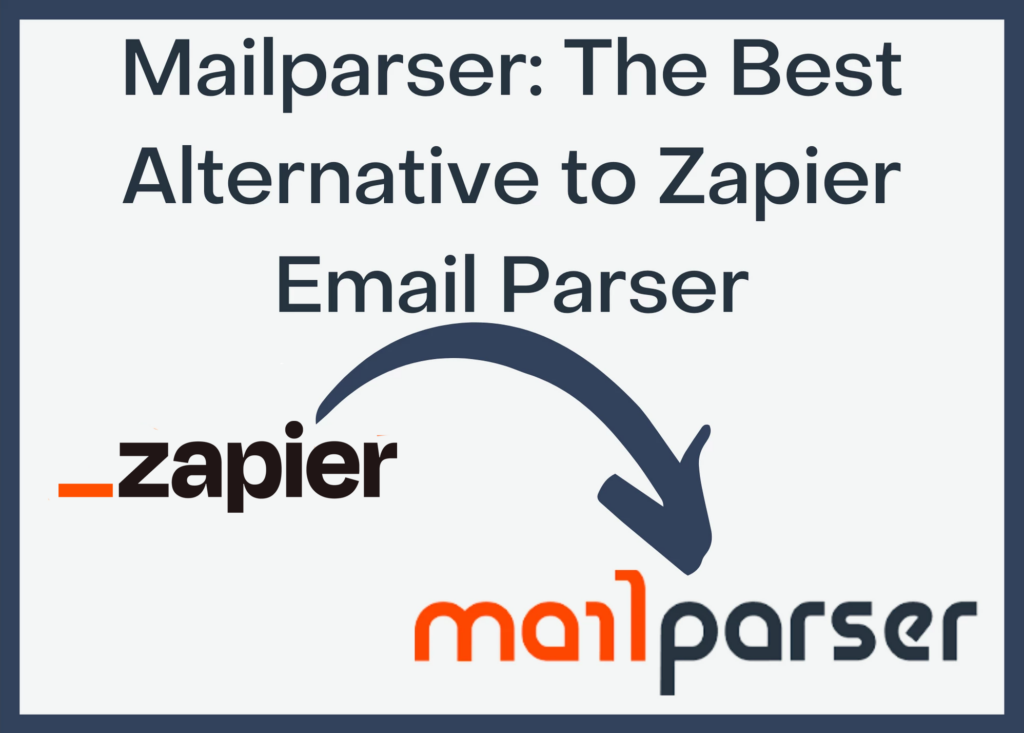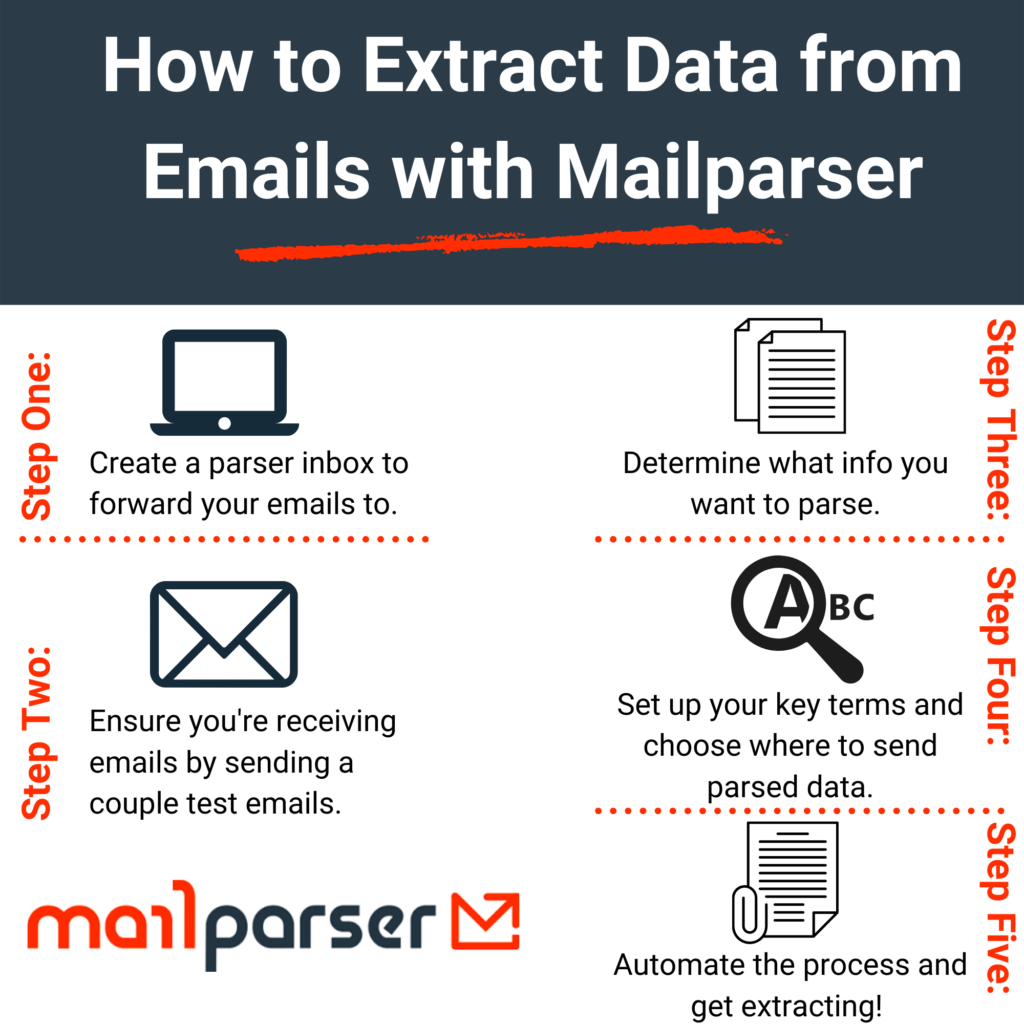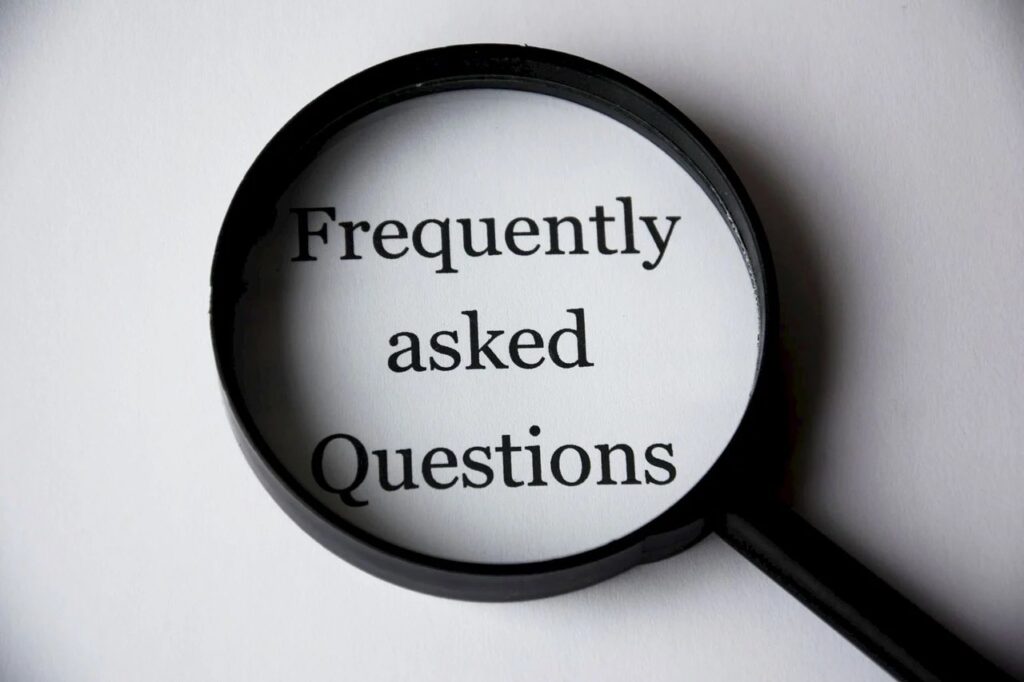
In 2021, the latest report from Statista said that more than 50% of the world’s population uses email (around 4.1 billion people). What’s more is that 90% of Americans over age 15 use email. The translation? Email isn’t going anywhere. Users share various data every day through email: invoices, orders, pictures, and other files–these data typically sit in your inbox, waiting to be moved, to be parsed, to be saved, and cherished forever.
So, how do you mine this data? How do you consolidate it into one accessible space? This is where an email parser comes in handy, and it’s the answer to your chaotic mess of an inbox. In this article, we’re going to review the most common mail parser, Zapier, and why you can find a better alternative to Zapier email parser in Mailparser.
What’s an Email Parser?
To parse means “to break down into components.” Typically, reading an email involves sorting out the essential bits and figuring out what to do with them. Do they need to be forwarded on to other people? Do sales records need to be updated? This process of mentally extracting important details from an email and putting them somewhere else takes up valuable time. If a bottleneck develops in simply getting data from your email to the right people or software, your business suffers.
An email parser is automation software that can extract data from inbound emails. More advanced automation software like Maiparser can also search and extract data from your email attachments (like PDFs, CVs, or Excel files) as well. Email parsers use conditional processing to pull data that matters to you. This way, you only receive the information you need.
An email parser gives you time back, eliminates bottlenecks, and improves your efficiency. It’s a tool that will automatically parse your email into valuable components, ready to be sent wherever they need to go.
A More Robust Alternative to Zapier Email Parser
Extract data from tables, attachment parsing, advanced data capture filters & post processing, and direct Excel/CSV/JSON/XML exporting functionality.
Try it free. No credit card required.
How does an email parser work?
Email parsers work by using set criteria put in place by you and the rules you set. First, you input the keywords and terms for the parsing agent to search. Then, it scours for and parses the data fields from email bodies, headers, sender details, attachments like PDFs, and more.
It does all of this on your terms, using your rules. So, for example, if you tell the parsing agent to search for terms like “bank statement,” it will extract data from any email containing the phrase “bank statement.”
Why is an email parser useful?
Using an email parser optimizes your workflow, automating the task of manually saving information to your computer. This saves you time and effort and grants you the ability to focus on more meaningful jobs.
It also saves time sorting the information post-parsing by using an email parser with robotic process automation. You can further process your emails beyond the extraction stage.
This means your parsing solution automatically extracts essential information from your email inbox, categorizes it, and sends that data to the integrated platform of your choice. Your databases, files, CRM (customer relationship management) system, and other integrations update automatically with new content. The email parser handles the data extraction. The automation piece ensures the processing and organization of data. You can automate large tasks while working on more pressing tasks.

What does Zapier email parser offer?
The Zapier email parser is an excellent option for many email parser needs. It is easy to set up as many individual mailboxes as you need, one for each format of the incoming email you need parsing. The key to getting the Zapier parser to function well is formatting the incoming emails. Each data field should be on a separate line or separated by a non-space delimiter. If this is the case, the Zapier email parser will work well and save you time. Also, the Zapier email parser is free; this is fantastic for users who need a lightweight solution with the flexibility to pass data to other Zapier supported integrations.
Once your parsing templates are set up and functioning correctly, it is easy to use the Zapier email parser as the trigger app in any “Zap.”
Popular zaps include sending parsed data to Google Sheets, Google Calendar, Slack, and Mailchimp. When template emails are consistent and straightforward, it makes perfect sense to stick with the Zapier email parser. They offer an excellent tool with exceptional support.
When you need more advanced options, specifically flexibility in email data formatting, a great alternative to Zapier email parser is Mailparser.
What does Mailparser offer?
Mailparser does everything the Zapier email parser does, but it is just more powerful. Read on or sign up for a free subscription and see for yourself.
Extract Data from Tables
Mailparser comes with powerful table and list parsing filters. Whether you need to extract table rows, repeating text blocks, or conditional text filters on table data, we have you covered. Once you have your table data, you can add many advanced table filters to post-process your data.
Attachment Parsing
Should you want to extract data from emails and attachments, you have come to the right place. Right now, it is possible to extract text from:
- Simple .pdf documents
- Simple .xls, .xlxs, and .csv Spreadsheets
- .txt files
- .xml files
No matter which file format, the text will be extracted and available as if it was text in the body of the email. Read more here on attachment parsing.
Advanced-Data Capture Filters & Post Processing
We describe a few of our most used filters below. They allow you to clean up and extract the data you want and even post-process the information you have sent to your inboxes.
- Text filters allow you to set start and end positions for finding text, effectively cutting away everything you don’t need for that particular parsing rule. This eliminates the condition that each data point is on a separate line.
- Cell quantity and cell content filters allow you to extract data from a table, even when table sizes are variable.
- Filter out entire emails from the mailbox (to be ignored by the parser) if they don’t contain a particular word(s).
- Keyword filters direct the parser to search for specific keywords and return a specified value for each email containing those keywords.
- Date formatting can change the format of the date field.
- Time zone formatting, convert the timestamp to a different time zone.
- Text modification includes splitting the name field into first and last names, changing capitalization, and normalizing the postal address.
- The above are just a few literally thousands of ways to stack filters to enhance granular data extraction.
Direct Excel/CSV/JSON/XML Export
Many users want nothing more than to dump their data as a backup for later use to archive or to upload that file to another application. We allow you to export your data into many popular formats and set the parameters on the time frame of the data you wish to export. Converting to other file types has never been easier. Excel and CSV tend to be the most common, but you’ll also be able to convert email to JSON or XML with Mailparser.
Zapier is the leading platform integrator on the market. You can connect your Mailparser account to any app on Zapier. Apart from Zapier, we also have a partnership with Microsoft Flow. Similar to our Zapier relationship, you can send parsed email data through Microsoft Flow and other native integrations with Salesforce, Zoho, and Google Sheets. You have tons of options for platform integrations.
Other things we do
- Mailbox duplication, including all parsing rules, filters, and webhooks associated with that mailbox
- Individual parsing rule duplication, ability to copy the duplicates to other mailboxes
- Direct upload of .eml files for bulk processing
- Parsing rules created automatically by the parser based on the template email
Automate Your Email Workflow in Minutes
Extract and save the data that matters to you most.
Try it free. No credit card required.
How to Extract Data from Emails with Mailparser
Easy Steps to Get Started in Less Than 10 minutes
Now you’re aware of the benefits of email extraction and why it’s important to choose a software that works best for your needs. If you’re sold on the idea of automating your workflow, let’s review how to parse emails with Mailparser. You don’t need to know how to code to configure our services. We designed our software to be accessible for non-programmers.
Step 1: Create a parser email
This is the email and inbox where you will forward all of the emails and attachments that need to be parsed, extracted, and organized. If you need help, view our guide on how to create a free inbox.
Step 2: Send One or Two Test Emails
After you’ve created your parser email, it’s always good to double-check that your emails are getting to your new parser inbox before you start automating the process. Send a sample email to your inbox to verify your account works correctly.
Step 3: Create Rules
To extract the information you want from your emails, you must set up your parsing rules within Mailparser. You can create custom rules from your dashboard or select our premade parsing templates for a faster approach. First, determine what information you want to parse from your emails or attachments, such as email addresses, names, addresses, and anything else you want to extract. You can choose from various components like email headers, sender and recipient names and email addresses, body text, and file attachments.
Step 4: Set up the key terms
Since you want to extract data from your parsed emails, like keywords in an email’s body, header, or an attachment like an image, you’ll need to set up what key terms you need extracting.
Step 5: Automate the process and start extracting!
Set your email, Gmail, or Microsoft Outlook to forward target to Mailparser to do the rest automatically. You can export the extracted data to CSV, Excel, or JSON format files, which can be imported into your CRM. You can also integrate Mailparser with a host of other applications like Zapier, Microsoft Flow, Google Sheets, Salesforce, Hubspot, and more! From there, you can automate your workflow and never have to worry about organizing certain information ever again.

Zapier Email Parser: Frequently Asked Questions (FAQs)

How much does an email parser cost?
Email parsers carry a range of price points. The cost depends on the number of emails you receive for your business. We recommend starting with our free plan if you receive around ten emails a month. We also have a Professional plan starting at $33.95/monthly for 6,000 emails, Business for $83.95/monthly for 24,000 emails/annually, Premium for $249.95/monthly for 120,000 emails, and Enterprise levels for clients in need of more power.
Is Email Parsing Like Web Scraping?
Email parsing and web scraping are similar. Both software use machine learning to process data. Each can also extract information like names, titles, contact information, and any other data types you want.
The difference between email parsing and web scraping is the nexus of the API: where is the API getting data? An email parser extracts textual data from emails, whereas a web scraper extracts data from websites. Email parsers read your incoming emails for specific information, and a web scraper does the same thing for web HTML pages.
Do I need WIFI to use Mailparser?
Yes. Wifi is necessary to use Mailparser because Mailparser is web-based software and not a downloadable application.
What’s the recommended way to send emails to Mailparser?
There are four methods of getting your emails into your @mailparser.io inbox:
- Manually forward an email once you receive it
- Create automatic forwarding filters in your email client
- Tell the sender to send a copy to mailparser.io directly
- Import .eml files directly from the parsing rule editor tab
Choosing which of the four methods depends entirely on your use case.
Hopefully, the above scenarios illustrate the value of the Zapier email parser and Mailparser. Also, the differences a user might be interested in based on their use case.
Alternative to Zapier Email Parser
Try Mailparser, a more robust alternative to Zapier email parser.
Try it free. No credit card required.

